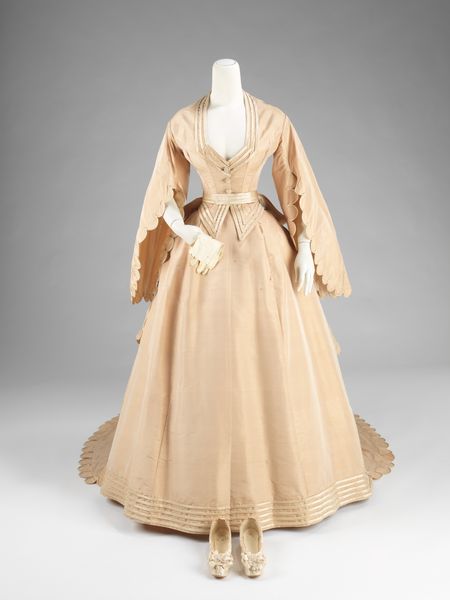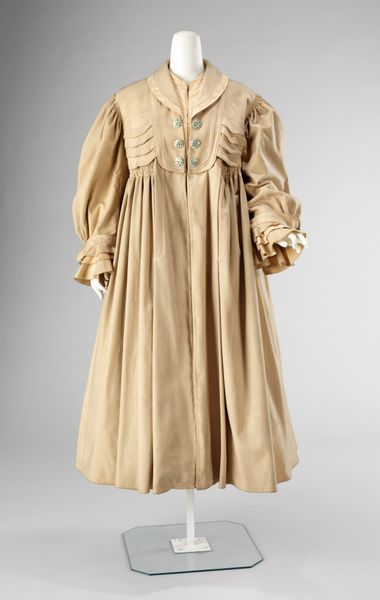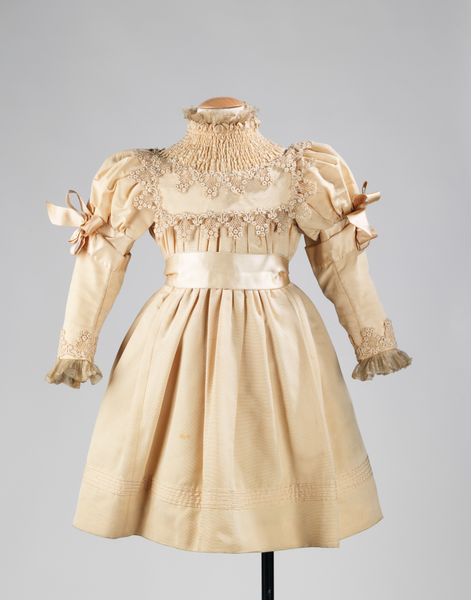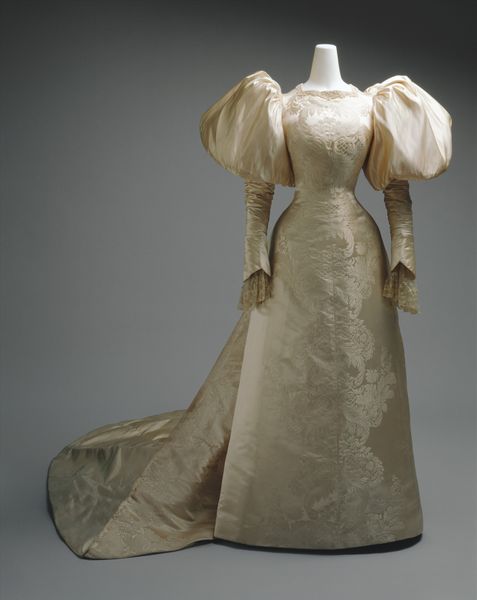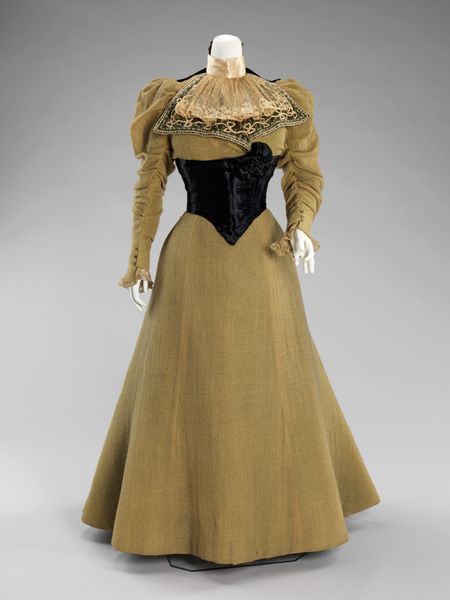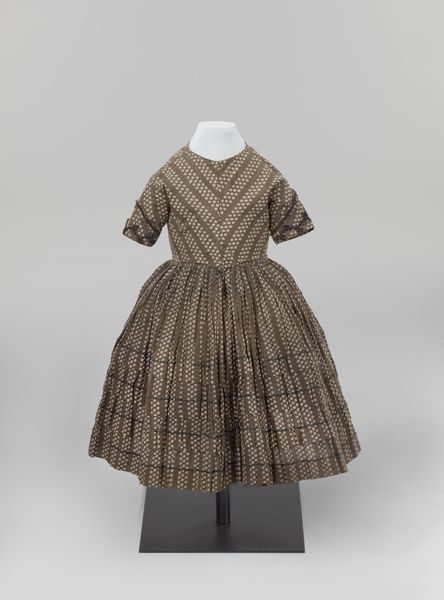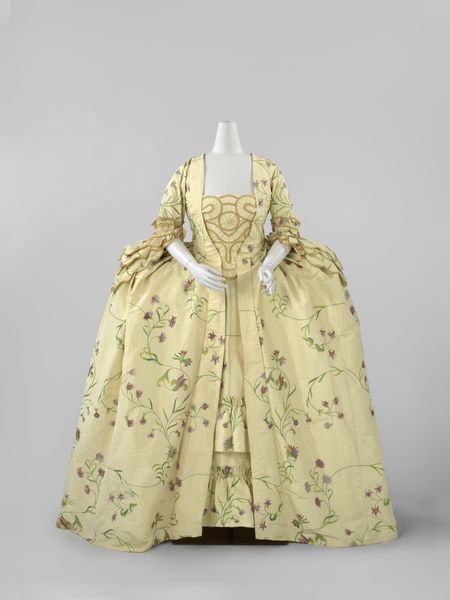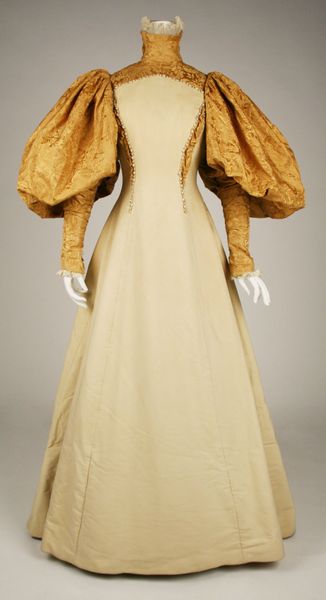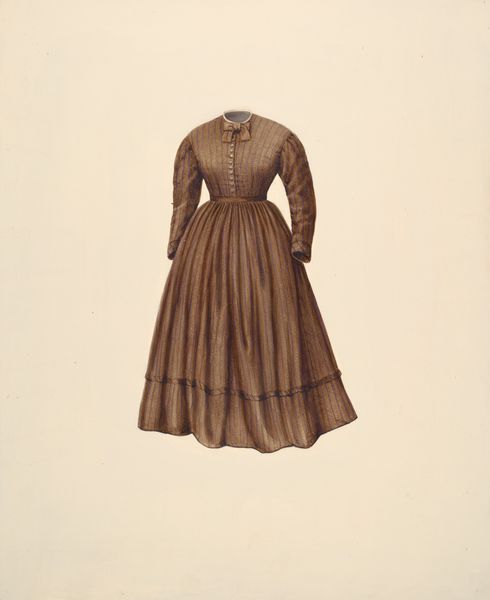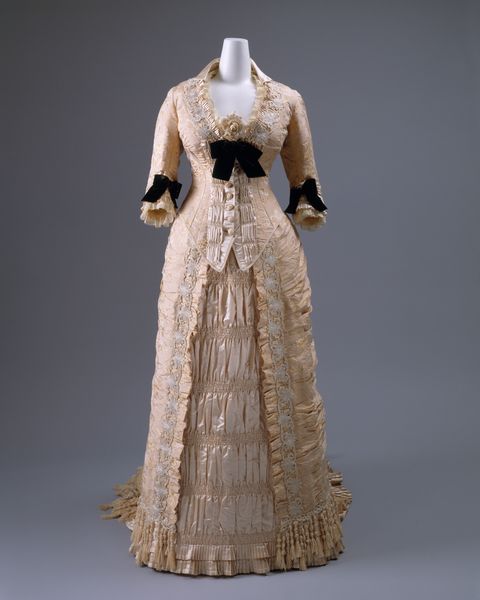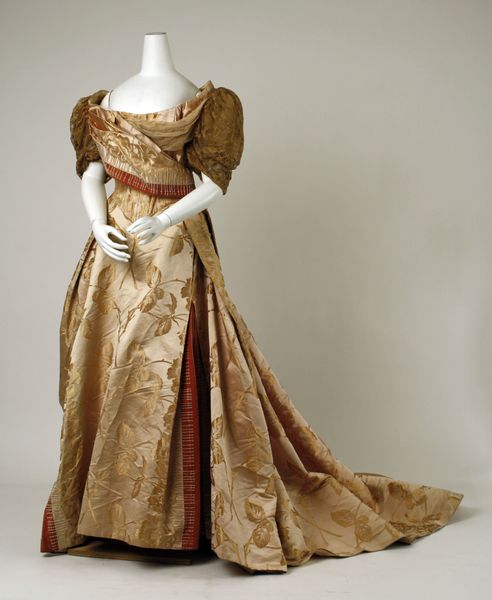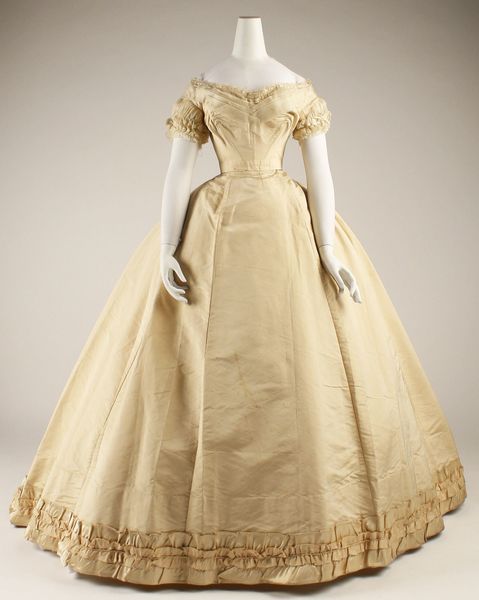
Japon van katoen, bedrukt met bruin rasterpatroon en strooimotief van bloempje in vierkant, met boothals, lange mouwen, gerimpeld lijf en rok. Lijf gevoerd met linnen. after 1859
0:00
0:00
textile, cotton
#
fashion design
#
underwear fashion design
#
fashion mockup
#
textile
#
collage layering style
#
fashion and textile design
#
historical fashion
#
wearable design
#
clothing photo
#
cotton
#
fashion sketch
#
clothing design
Dimensions: length 64.5 cm, waist 44.0 cm
Copyright: Rijks Museum: Open Domain
Curator: The overall effect is one of subdued elegance. A brown grid and floral pattern adorn a cotton japon from after 1859. What stands out to you initially? Editor: The materiality – the plain cotton, the seemingly simple repeating pattern – hints at wider stories of production and use. It evokes domesticity. Curator: It’s evocative of a specific moment. Japons like this gained popularity as informal house dresses. The "Japon" style name connects it to global trade. It provided women more freedom than formal dress. Editor: Yes, consider the context: Cotton production in this era was intrinsically linked to global economies. Who was producing the cotton, and under what conditions? Was the simple, repeated pattern applied using mechanized printing techniques that were quickly industrializing textile production at the time? Curator: It raises important questions about class and consumption. Wearing this, women subtly resisted stricter dress codes while participating in a system dependent on exploitative labor practices. Was it an assertion of bourgeois freedom? Editor: Precisely. This dress, seemingly domestic and modest, embodies so many threads. The wearer signals informality, the material whispers of globalization and exploitation, the very design connects it to Orientalist fantasies and global supply lines. Curator: It reflects women's complex position. Did this offer them agency within societal limits, or did they become complicit in a structure of exploitation? Editor: Both. Clothing, like all crafted and manufactured objects, always contains embedded material and political conditions. To view such a common garment sparks discussions of these social and material practices. Curator: Looking at this dress prompts essential considerations of fashion history as more than trends and beauty. Editor: Definitely. Analyzing objects like this illuminates material connections and complex human relations hidden within what is worn. Curator: Exactly. Thinking about clothing allows us to better consider past norms and how the social system operated at that moment. Editor: Agreed. A seemingly straightforward dress prompts us to understand design, construction, labor, and those entangled historical forces.
Comments
No comments
Be the first to comment and join the conversation on the ultimate creative platform.
